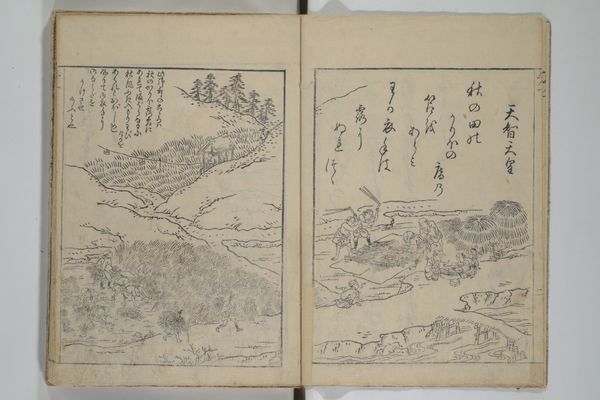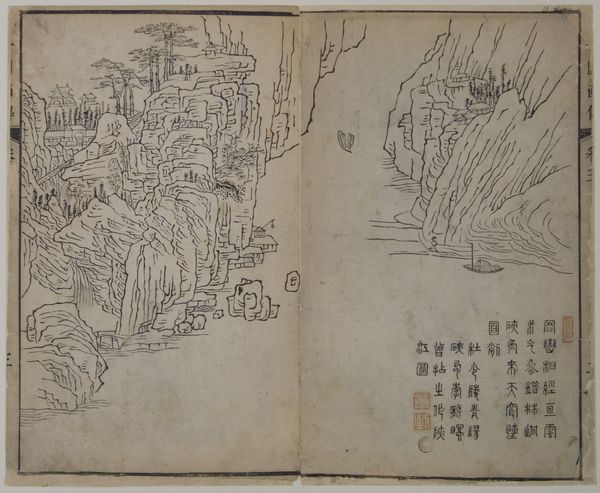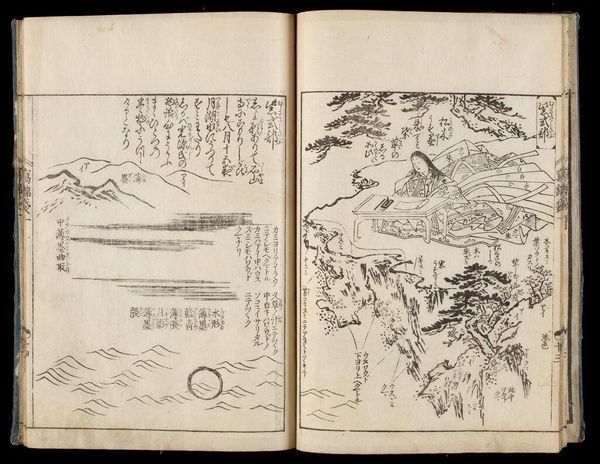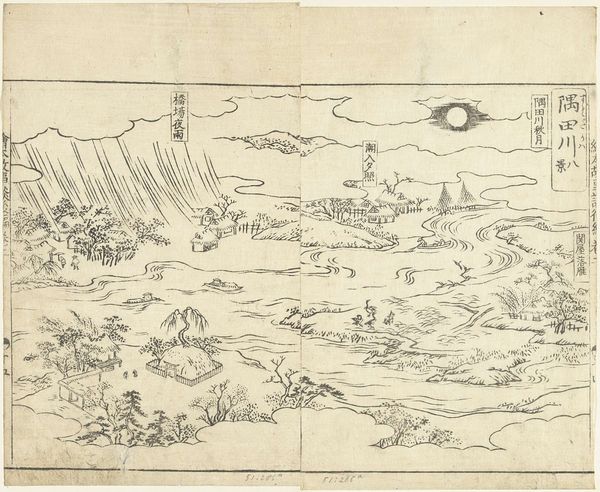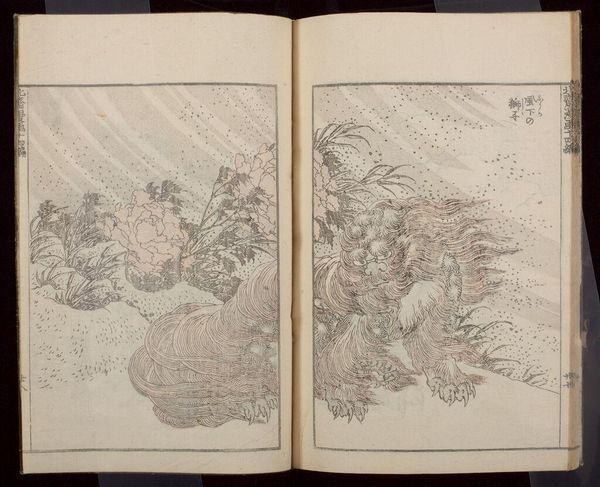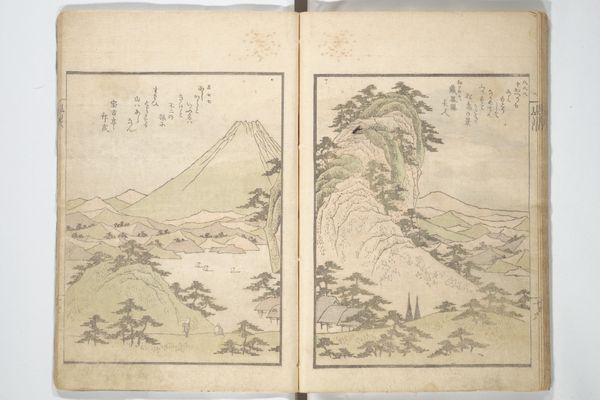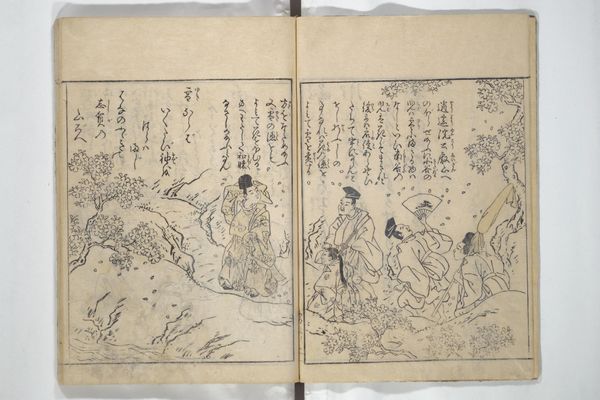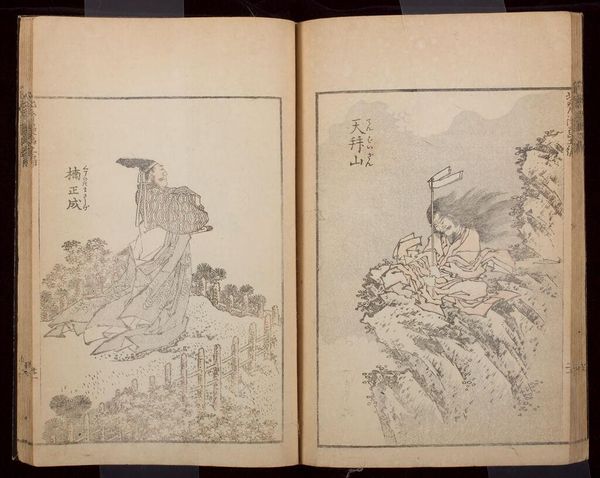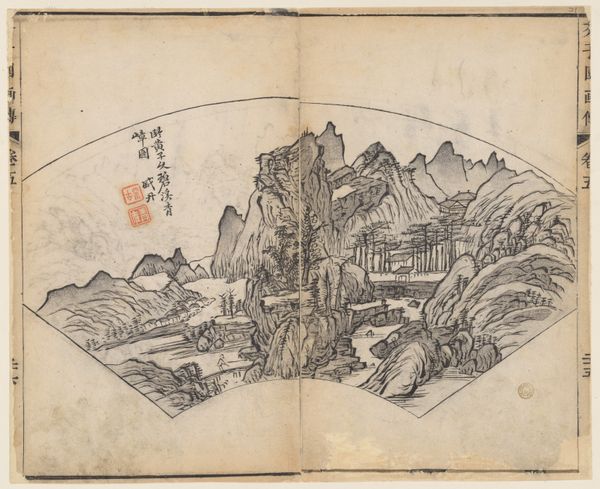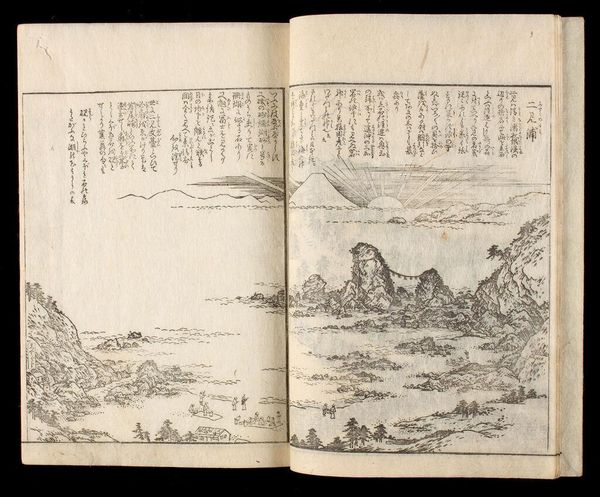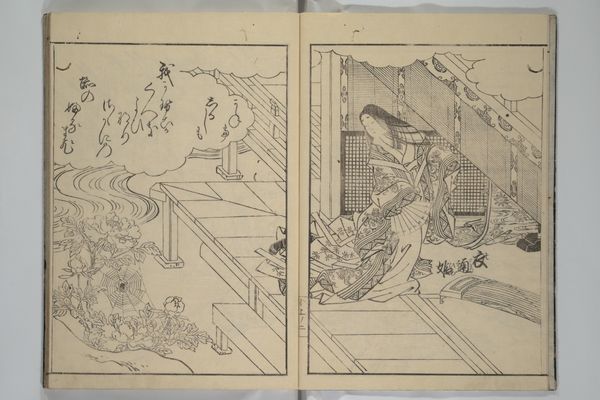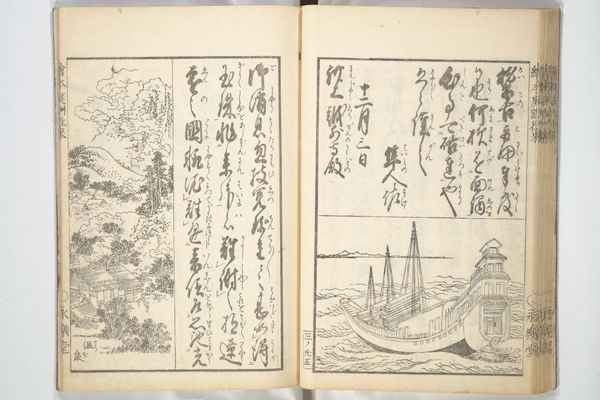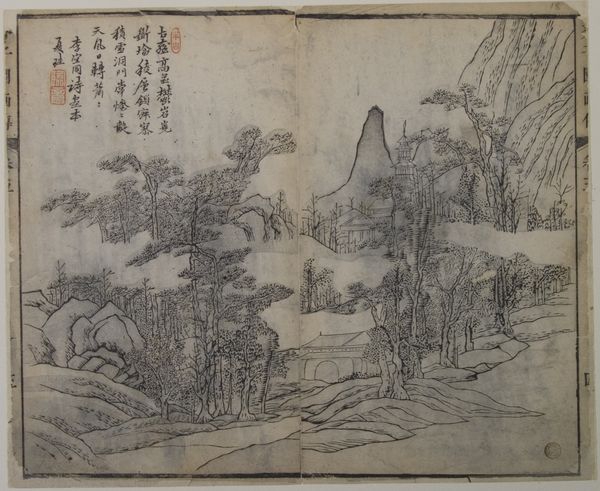
drawing, print, paper, woodblock-print
#
drawing
# print
#
book
#
asian-art
#
landscape
#
ukiyo-e
#
house
#
japan
#
paper
#
woodblock-print
#
history-painting
Dimensions: 8 7/8 × 6 5/16 in. (22.5 × 16 cm)
Copyright: Public Domain
Curator: It’s fascinating how Toriyama Sekien, in his 1781 woodblock print, *One Hundred Monsters Ancient and Modern,* uses these landscapes. It's deceptively calm, isn't it? Editor: Yes, the composition is very balanced, even peaceful. But the title suggests something monstrous. How do you interpret this work? Curator: I see this print, not merely as a depiction of folklore, but as a subtle critique of social order. The *ukiyo-e* style, which often focused on transient pleasures, is here used to depict unsettling supernatural elements. Consider the context: the late Edo period. Social hierarchies were rigid. Might these monsters be stand-ins for marginalized groups, perhaps? Are they a symbolic representation of the societal anxieties and suppressed voices of the time? Editor: That's interesting. So you're saying the monsters could be metaphors for people who didn't fit into society? Curator: Precisely! And consider the role of women, often absent from official narratives, yet central to folklore. Could these creatures, lurking just beneath the surface of idealized landscapes, represent female power, or perhaps the fear of it, in a patriarchal society? Editor: So the tranquil surface hides deeper social meanings. I never would have considered that on my own. Thank you. Curator: Absolutely! By exploring the intersection of folklore, social history, and gender dynamics, we can unearth the powerful undercurrents in these seemingly simple images. I will never look at folklore the same way again!
Comments
No comments
Be the first to comment and join the conversation on the ultimate creative platform.
